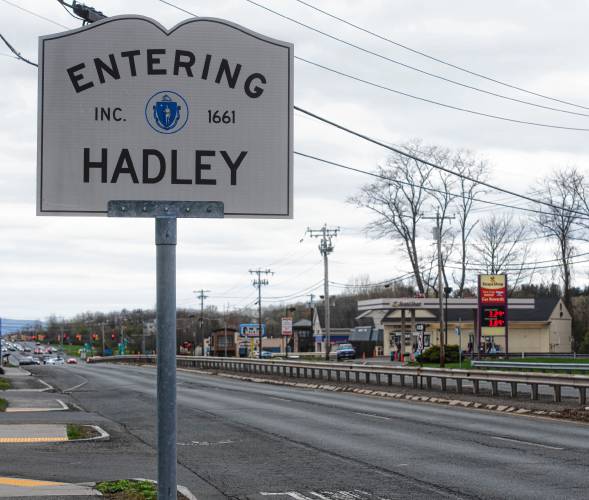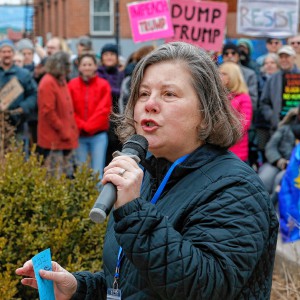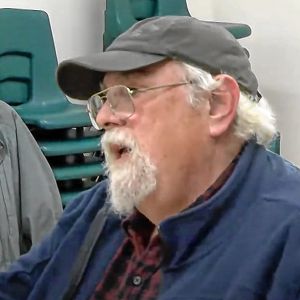Hadley eyes smart growth zoning district

GAZETTE FILE PHOTO GAZETTE FILE PHOTO
| Published: 05-11-2024 4:01 PM |
HADLEY — Of seven area communities with smart growth zoning districts, Northampton has been among the most successful at developing new homes and apartments, bringing on 211 housing units, 151 of which are affordable, since the district was approved 16 years ago, according to a Pioneer Valley Planning Commission planner.
“The most productive of these has been Northampton, particularly their Village Hill, what was formerly Hospital Hill,” Kyle Finnell, a senior land use and environmental planner, told members of the newly formed Smart Growth Steering Committee on Monday.
Using a Direct Local Technical Assistance grant sought by the town’s Planning Board, Finnell is beginning work that could lead to development of a smart growth zoning district, under the state’s Chapter 40R law, by the end of 2024. This would then be brought to annual Town Meeting in 2025.
At the inaugural meeting, Finnell said there has been some smart growth housing production in other communities, with Easthampton, which adopted a district in 2010, getting 73 new homes, 55 of which are affordable, and South Hadley, which adopted a district in 2015, getting 60 new homes, with 35 of these affordable. But a second 40R district created in South Hadley in 2018 has yet to yield any new housing. As of March 27, 60 smart growth districts have been approved in 49 cities and towns across Massachusetts.
The committee, which has representatives of the Planning Board, Select Board, Housing and Economic Development Committee and Council on Aging, will be meeting twice a month, reviewing existing conditions, comparing existing zoning and examining overlay districts.
The Planning Board began discussing such a district with the state’s Executive Office of Housing and Livable communities more than a year ago, at which time it drafted a large district on Route 9 centered on the former EconoLodge hotel, where Valley Community Development is creating affordable apartments, and encompassing the Hampshire Mall, whose owners have suggested a possible residential redevelopment component that University of Massachusetts students in the departments of Architecture and Landscape Architecture have explored. But planners looked unfavorably on using up so much of the commercial zone that supports the tax base for housing.
Still, in December, planners pursued the smart growth zoning district that could likely allow multiple units of housing on a parcel by right, with some portion of those units deemed affordable. Most zoning districts in Hadley prohibit more than one dwelling on a property, with some exceptions, such as for accessory units.
“Our current thinking is that such a district would enable adaptive reuse of certain already developed commercial sites along the Route 9 corridor, with easy access to transit and retail and food-service amenities,” planners wrote in the application for the grant.
Article continues after...
Yesterday's Most Read Articles
 Local ‘Hands Off!’ standouts planned as part of national effort
Local ‘Hands Off!’ standouts planned as part of national effort
 Long-vacant former Faces spot in Northampton gets new tenant
Long-vacant former Faces spot in Northampton gets new tenant
 Here come the sweetness: Four new businesses prepping to open in downtown Northampton
Here come the sweetness: Four new businesses prepping to open in downtown Northampton
 State senators organize Trump defense: Comerford a leader on Response 2025 initiative
State senators organize Trump defense: Comerford a leader on Response 2025 initiative
 Five UMass Amherst students have visas, student status revoked
Five UMass Amherst students have visas, student status revoked
 Hatfield Select Board removes elected Housing Authority member
Hatfield Select Board removes elected Housing Authority member
Under such a district, 20% of the housing must be provided for 80% of area median income, which for Hadley means $70,100 in earnings for a two-person household and $87,600 for a four-person household, with rents $1,753 and $2,190 respectively.
Communities that adopt such districts get an upfront payment from the state, between $10,000 and $600,000, depending on how many projected units could be built, and an additional $3,000 payment for each unit that is brought online. The state covers costs of education associated with students, Finnell said.
To participate, there are minimum density requirements and an eligible location must be identified, such as an area of concentrated development. Hadley would qualify based on having 50% of land along Route 9 currently developed and zoned for commercial or mixed use.
Finnell said design standards for how buildings look accompanies the district. Hadley is familiar with this from the historic village overlay district, which requires peaked roofs and limits building sizes to 12,500 square foot.
But there has been limited development under these rules, with the only prominent projects the Hampton Inn and the former Hadley Farms Meeting House.
Justin Pelland, who serves on the Housing and Economic Development Committee, said his professional experience is form based zoning in bylaws will drive away developers because there are too many hoops to jump through.
Finnell said a zoning bylaw could be ready by the end of the year, with the steering committee to provide input on what might be most viable.
In June, the committee host an initial community engagement session.
The smart growth is not just about creating affordable housing, Finnell said, but also in-fill development, putting housing where infrastructure exists and putting people closer to transportation.
Part of the challenge for Hadley, identified in its housing production plans, is that while there are 2,305 housing units, only 30.7% were built after 1979. The town has 275 affordable units.
Finnell said if the committee wants to get a bylaw written, a special public hearing would have to be scheduled in late summer to get additional feedback and comment from residents.
Scott Merzbach can be reached at smerzbach@gazettenet.com.






 Photo: Spring calling
Photo: Spring calling A father’s dream to be the best: Twelve men graduate from Nurturing Fathers program
A father’s dream to be the best: Twelve men graduate from Nurturing Fathers program McGovern co-sponsors bill that aims to stop ‘backdoor’ cuts to SNAP benefits
McGovern co-sponsors bill that aims to stop ‘backdoor’ cuts to SNAP benefits
